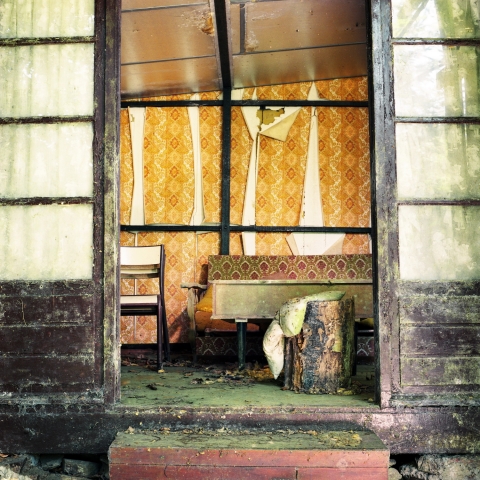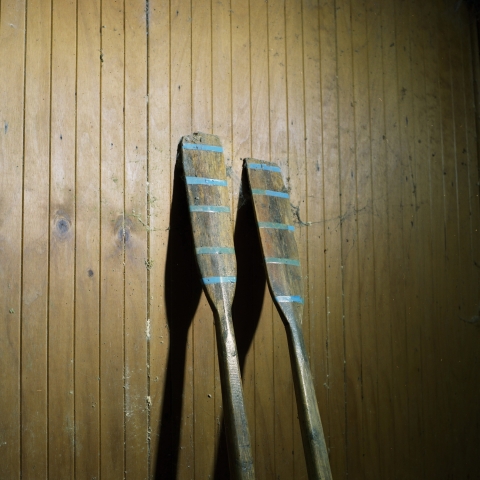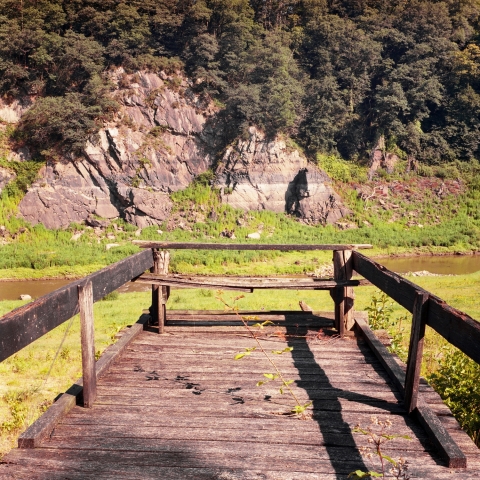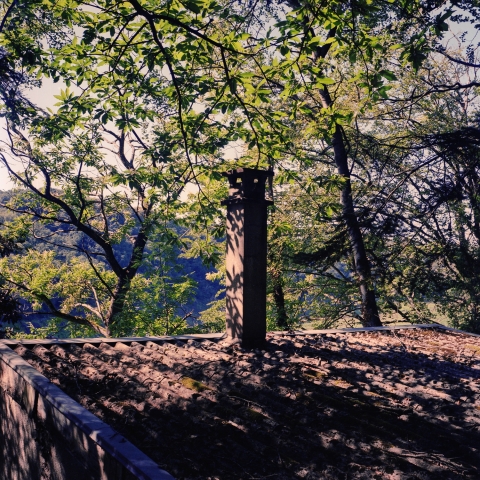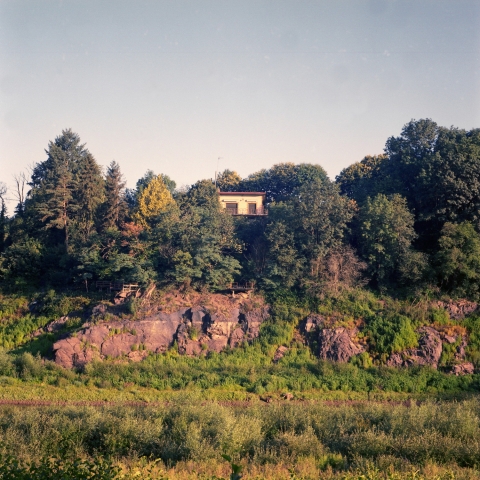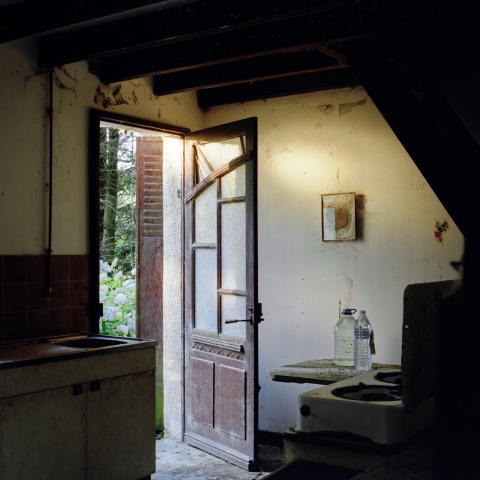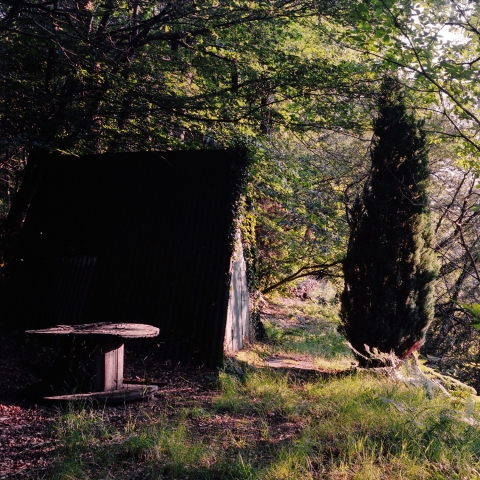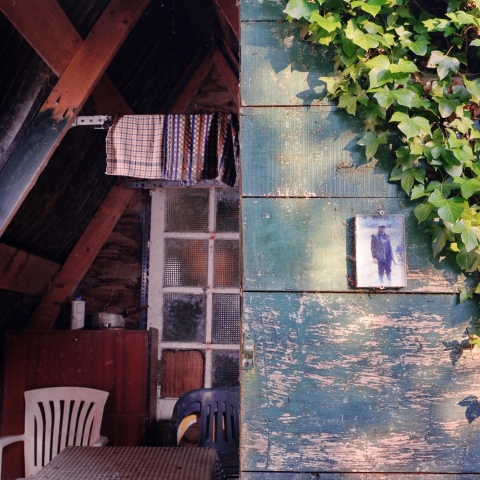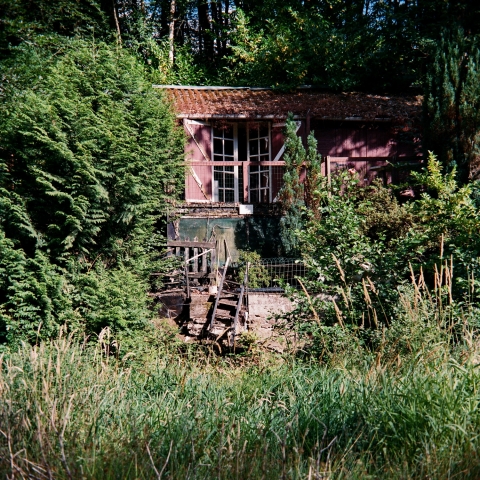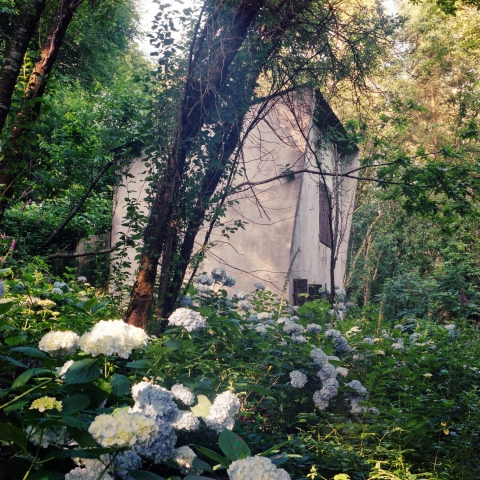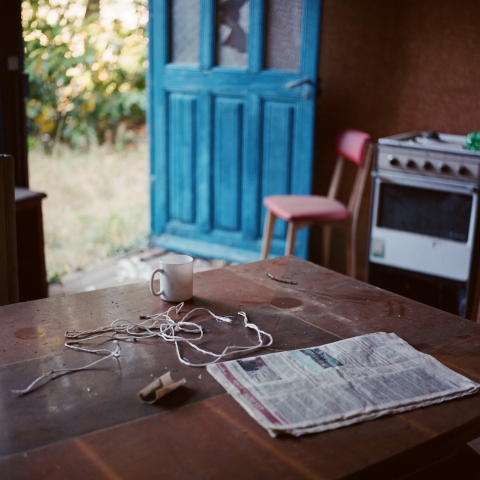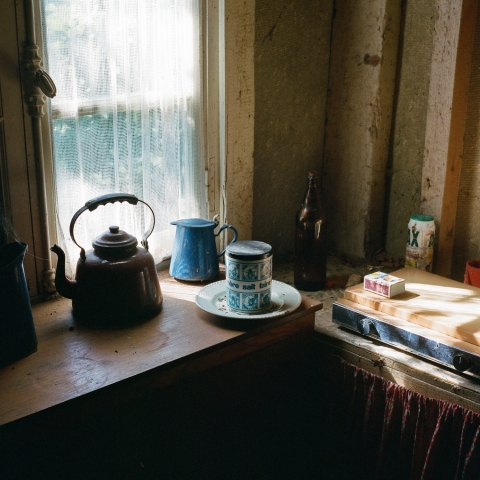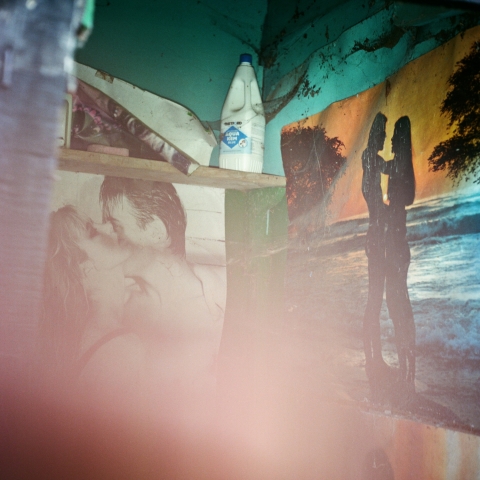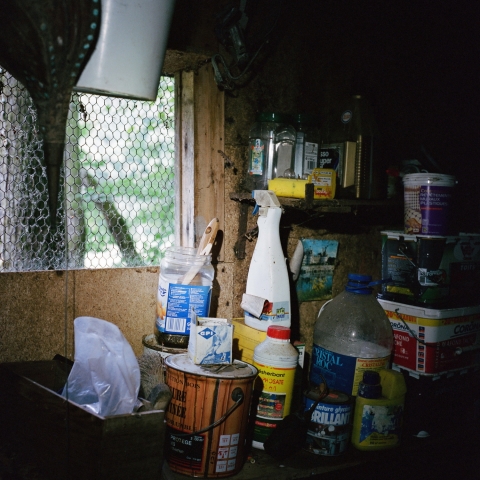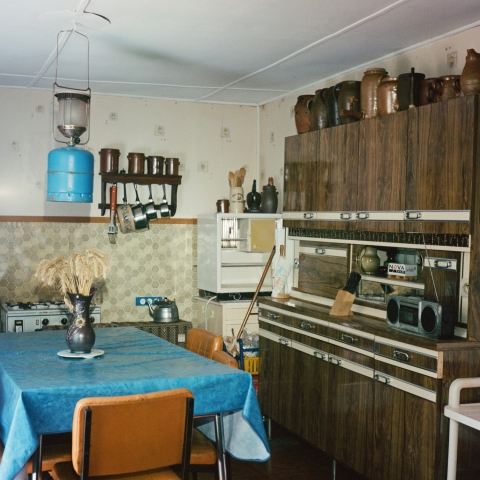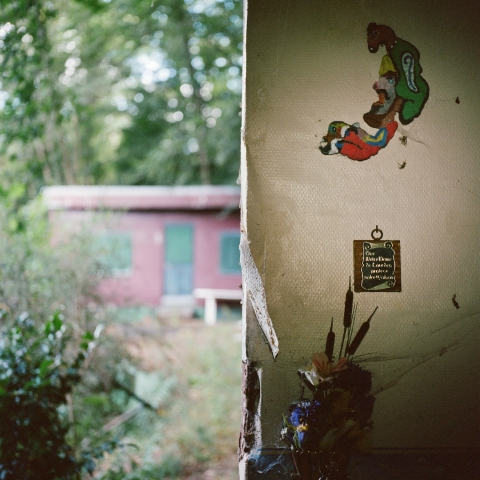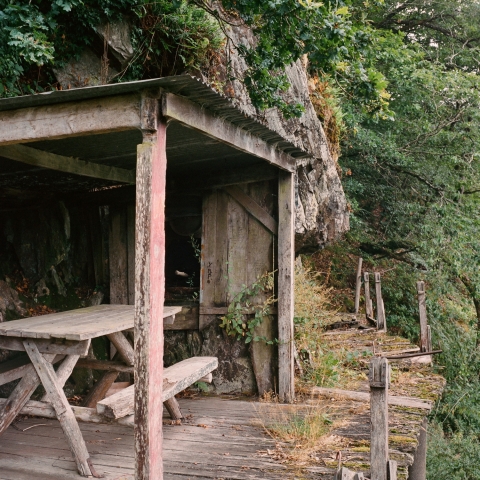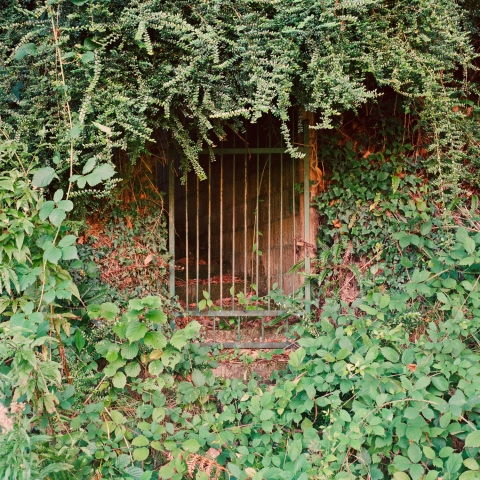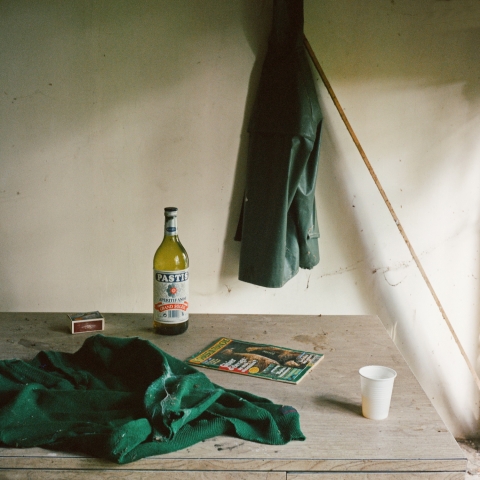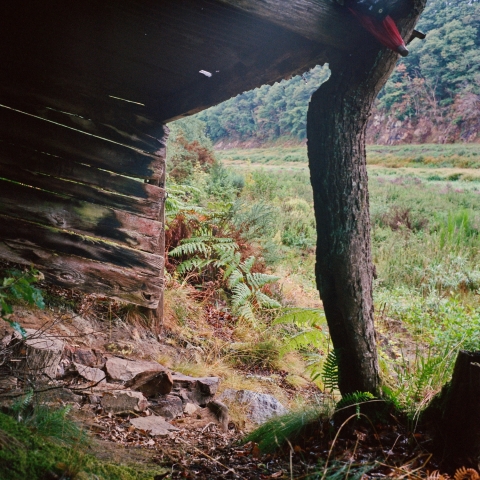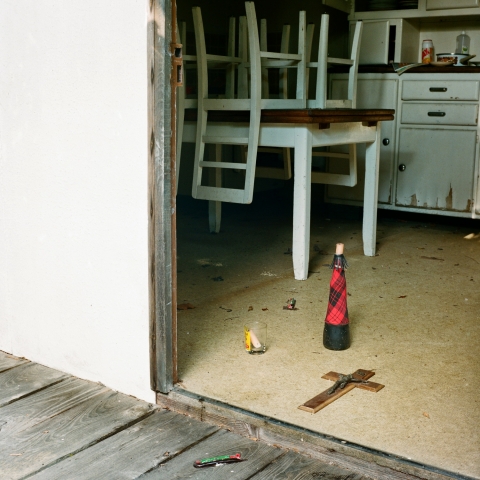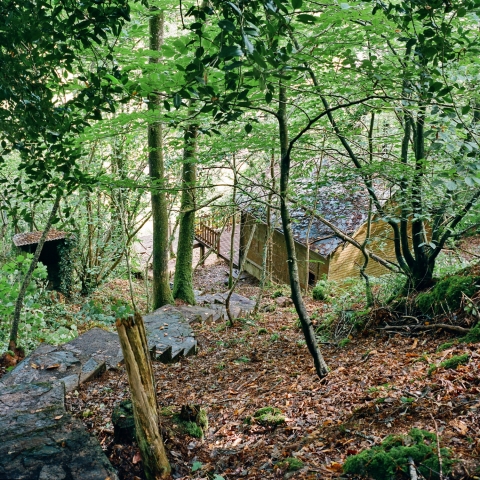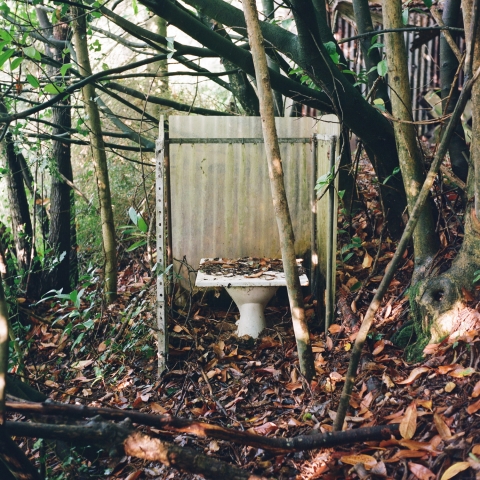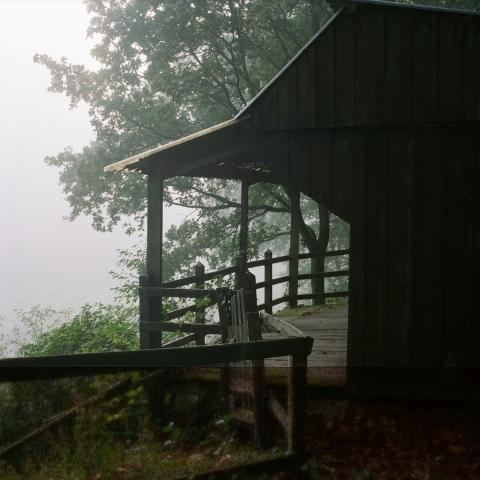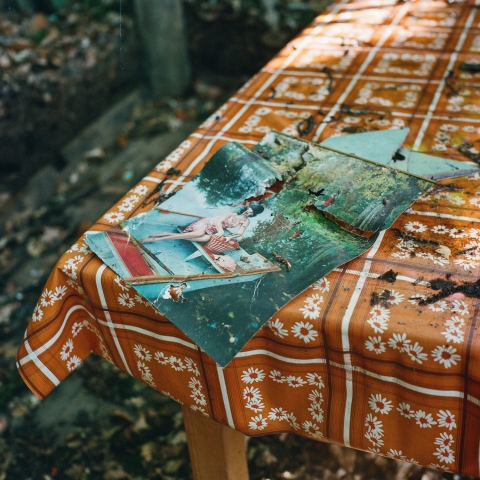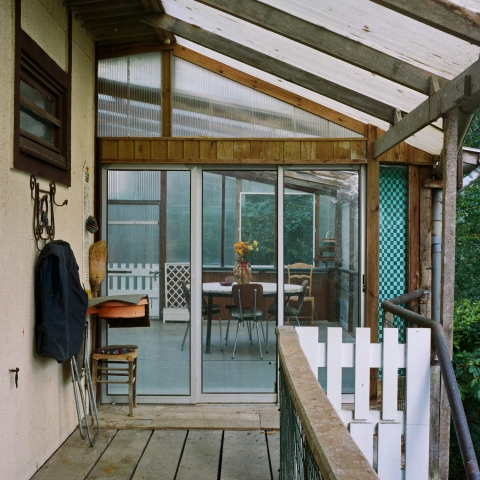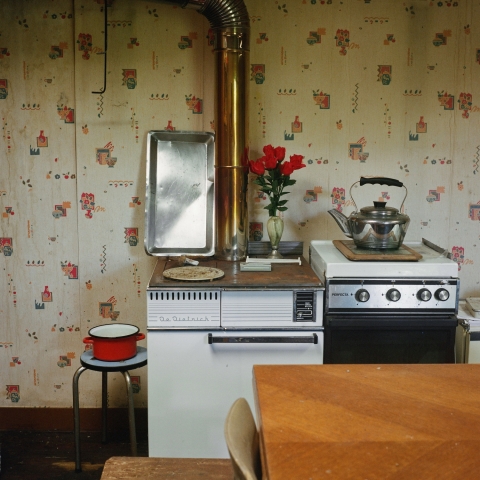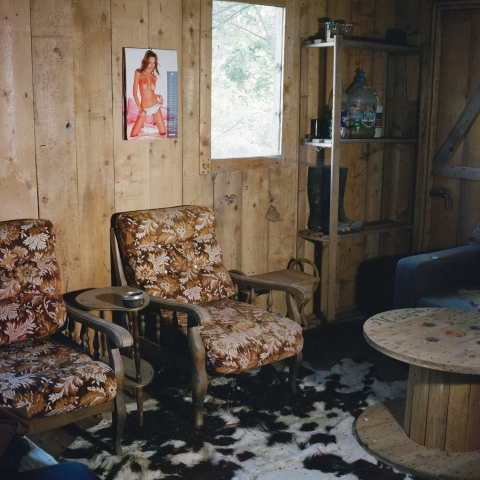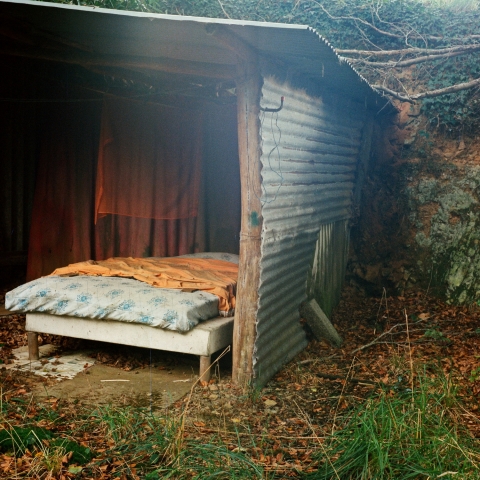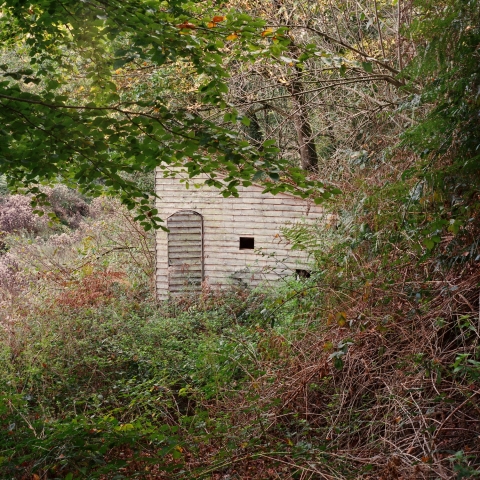The cabins of Vezins
The lakes of Vezins and La Roche-qui-Boit are part of these hidden landscapes: inaccessible because below the steep and wooded slopes, most visitors only know them from the bridges that span over reservoirs such as the Pont des Biards or the Pont de la République. These landscapes appeared in the first half of the 20th century when the Société des Forces Motrices de la Sélune undertook the construction of two hydroelectric dams on the Sélune about a dozen kilometers from its mouth in the Bay of Mont Saint-Michel. The reservoirs then flooded the valley transforming its landscapes. These lakes quickly became a place of fishing but also of vacationing. In some places, near the Biards Bridge and on the banks of the Lair for example, the banks of Lake Vezins (the larger of the two) are punctuated with cabins hidden in the undergrowth. Built in the 1950s and 1960s, these heterogeneous installations bear witness to a strong attachment to places and to the memory of a privileged and intimate relationship with a changing landscape.
These constructions are distinguished by multiple materials, including reclaimed, composite shapes and styles. Beyond this heterogeneity, self-construction and DIY dominate and still seem to bear witness to the time invested in the development of these places. Rods, buckets, seats, a stove, and a few items of groceries, a few pieces of furniture for crockery, a bed set up at the back of the shed: the bare minimum for a fishing trip. Sometimes a little more comfort. But always special care is taken in the arrangements to enjoy the view of the water, whether behind windows or outside from a terrace or a pontoon set up by the lake. Because, if the populations of pikeperch, pike and carp constitute the reputation of the lakes of Sélune, it is also, and above all, the "scenery" offered by this portion of the valley, sometimes referred to as "gorges", which counts. . It indeed offers original atmospheres that are difficult to replace. These huts, or what remains of them, thus testify to the past attractiveness of this corner of nature appropriated by the inhabitants of the surrounding municipalities as well as by fishermen from the region of Fougères and Rennes who have set up huts there. peach. The fisherman's rest, The beautiful valley, Very close to the lake, The end of the world, the squirrel house,… The shed constitutes a refuge, a separate micro-universe which allowed to escape from the nuisances of the city and hassle of work. The isolated character participates in this intimate relationship. It is a place of simple pleasures: fishing, collecting mushrooms, observing animals, sailing the lakes, and enjoying the landscapes. It is both a place where you could contemplate nature on your own, but also a place of conviviality where you would meet as a family, where friendships were formed, where knowledge was passed down between generations.
Lake Vezins has disappeared. The dam has been being demolished since July 2019. Ten years earlier, the removal of the Sélune dams was announced at the end of 2009. This government decision is part of a series of regulations and aims to restore ecological continuity. 36 and 16 meters high, these dams prevent migrating fish, such as salmon, from accessing spawning grounds, located on the upstream parts of the river, where they could reproduce. This decision was, however, strongly contested by local elected officials and residents. A long period of transition punctuated by conflicts but also strong uncertainties about the future of dams and lakes set in until the start of the demolition work on the Vezins dam. Already, the long emptying (March 2017 - August 2018), to manage the sediments accumulated upstream of the dam since the last emptying in 1993, of this same dam had begun to change the landscapes of the valley, revealing a new landscape: a devastated valley in which the vegetation gradually reclaims the bottom. Still in place, but partly in poor condition or even totally abandoned, the fishing huts and pontoons, today with their feet in the air, bear witness to the scale of the transformation at work and the challenge opened up by this project to give a new project to this valley. These cabins are the subject of little attention from elected officials and consulting firms who have proposed avenues for the economic and landscape conversion of the valley. For the adventurous hiker or the lucky one who has been able to browse the lake from a boat, they nevertheless prove to be numerous: nearly 170 constructions have been identified along the banks of the two lakes to which we must add more basic shelters.
While the wilderness of the valley is emphasized and appreciated by the owners of the cabins, many are concerned about who will take care of the depleted areas. The image of abandoned cabins echoes nostalgic memories of lake life and a golden age that has now passed. Without lakes, most of these cabins have no reason to exist. Users describe their fear of the "big hole", of the "void" that awaits them. They express a major fear, that of the fallow land to come, synonymous with death: "We won't be able to do anything while waiting, and so people will end up living elsewhere and for me it will die". These users find it difficult to see the valley as only wild: it also needs humans who maintain it to be frequent. Resolving to abandon the place is however difficult: "I will continue to come at least a while to see". Others have decided and prefer not to come to the water's edge anymore: "the hut is no longer of interest without the lake". They resign themselves to the disappearance of the sheds: “For us it's the end of our leisure time, eh. If there is no longer a lake ”. On the other hand, destruction seems unthinkable: “Sell? it's not worth anything, it's no longer worth anything. So we don't know. Demolish: Frankly, that bothers me. ". They are not sure what interest to recognize in this new landscape imposed on them: "all these properties, they were bought, I was the first to buy them only for fishing, that's obvious. So after, what do I do with a valley that will be in front? ". Above all, they seem stunned by the change taking place: “We never imagined it would happen like this. Because that was our whole life. It was leisure ".
The significant investment provided by users in the maintenance of the cabins contrasts with their low participation in the definition of a new project for this portion of the valley following the disappearance of dams and lakes. If the announcement of the leveling of the Sélune dams revealed for others a form of monopolization of the banks of the lakes by the owners of cabins, who sometimes prevented passage and other activities, the inhabitants and users do not have not yet been called upon to define a new territory project which would guarantee sharing of the river and a place for each user (fishermen, kayakers, walkers, etc.). The appropriation by the inhabitants of the new valley will determine the success of the project being defined by elected officials. It will then be a question of assessing whether the residents will recognize themselves in the new landscapes created by the ecological project. Who will be the beneficiaries of this new project: the current inhabitants and users or even more distant external populations? In the end, it is the guarantee of the redefinition of a social link between the place and the residents and users that is therefore asked. What role will the sheds and their users play in this process? Are the cabins doomed to disappear once the lakes themselves have disappeared or will other forms of uses and links to the place appear?
These constructions are distinguished by multiple materials, including reclaimed, composite shapes and styles. Beyond this heterogeneity, self-construction and DIY dominate and still seem to bear witness to the time invested in the development of these places. Rods, buckets, seats, a stove, and a few items of groceries, a few pieces of furniture for crockery, a bed set up at the back of the shed: the bare minimum for a fishing trip. Sometimes a little more comfort. But always special care is taken in the arrangements to enjoy the view of the water, whether behind windows or outside from a terrace or a pontoon set up by the lake. Because, if the populations of pikeperch, pike and carp constitute the reputation of the lakes of Sélune, it is also, and above all, the "scenery" offered by this portion of the valley, sometimes referred to as "gorges", which counts. . It indeed offers original atmospheres that are difficult to replace. These huts, or what remains of them, thus testify to the past attractiveness of this corner of nature appropriated by the inhabitants of the surrounding municipalities as well as by fishermen from the region of Fougères and Rennes who have set up huts there. peach. The fisherman's rest, The beautiful valley, Very close to the lake, The end of the world, the squirrel house,… The shed constitutes a refuge, a separate micro-universe which allowed to escape from the nuisances of the city and hassle of work. The isolated character participates in this intimate relationship. It is a place of simple pleasures: fishing, collecting mushrooms, observing animals, sailing the lakes, and enjoying the landscapes. It is both a place where you could contemplate nature on your own, but also a place of conviviality where you would meet as a family, where friendships were formed, where knowledge was passed down between generations.
Lake Vezins has disappeared. The dam has been being demolished since July 2019. Ten years earlier, the removal of the Sélune dams was announced at the end of 2009. This government decision is part of a series of regulations and aims to restore ecological continuity. 36 and 16 meters high, these dams prevent migrating fish, such as salmon, from accessing spawning grounds, located on the upstream parts of the river, where they could reproduce. This decision was, however, strongly contested by local elected officials and residents. A long period of transition punctuated by conflicts but also strong uncertainties about the future of dams and lakes set in until the start of the demolition work on the Vezins dam. Already, the long emptying (March 2017 - August 2018), to manage the sediments accumulated upstream of the dam since the last emptying in 1993, of this same dam had begun to change the landscapes of the valley, revealing a new landscape: a devastated valley in which the vegetation gradually reclaims the bottom. Still in place, but partly in poor condition or even totally abandoned, the fishing huts and pontoons, today with their feet in the air, bear witness to the scale of the transformation at work and the challenge opened up by this project to give a new project to this valley. These cabins are the subject of little attention from elected officials and consulting firms who have proposed avenues for the economic and landscape conversion of the valley. For the adventurous hiker or the lucky one who has been able to browse the lake from a boat, they nevertheless prove to be numerous: nearly 170 constructions have been identified along the banks of the two lakes to which we must add more basic shelters.
While the wilderness of the valley is emphasized and appreciated by the owners of the cabins, many are concerned about who will take care of the depleted areas. The image of abandoned cabins echoes nostalgic memories of lake life and a golden age that has now passed. Without lakes, most of these cabins have no reason to exist. Users describe their fear of the "big hole", of the "void" that awaits them. They express a major fear, that of the fallow land to come, synonymous with death: "We won't be able to do anything while waiting, and so people will end up living elsewhere and for me it will die". These users find it difficult to see the valley as only wild: it also needs humans who maintain it to be frequent. Resolving to abandon the place is however difficult: "I will continue to come at least a while to see". Others have decided and prefer not to come to the water's edge anymore: "the hut is no longer of interest without the lake". They resign themselves to the disappearance of the sheds: “For us it's the end of our leisure time, eh. If there is no longer a lake ”. On the other hand, destruction seems unthinkable: “Sell? it's not worth anything, it's no longer worth anything. So we don't know. Demolish: Frankly, that bothers me. ". They are not sure what interest to recognize in this new landscape imposed on them: "all these properties, they were bought, I was the first to buy them only for fishing, that's obvious. So after, what do I do with a valley that will be in front? ". Above all, they seem stunned by the change taking place: “We never imagined it would happen like this. Because that was our whole life. It was leisure ".
The significant investment provided by users in the maintenance of the cabins contrasts with their low participation in the definition of a new project for this portion of the valley following the disappearance of dams and lakes. If the announcement of the leveling of the Sélune dams revealed for others a form of monopolization of the banks of the lakes by the owners of cabins, who sometimes prevented passage and other activities, the inhabitants and users do not have not yet been called upon to define a new territory project which would guarantee sharing of the river and a place for each user (fishermen, kayakers, walkers, etc.). The appropriation by the inhabitants of the new valley will determine the success of the project being defined by elected officials. It will then be a question of assessing whether the residents will recognize themselves in the new landscapes created by the ecological project. Who will be the beneficiaries of this new project: the current inhabitants and users or even more distant external populations? In the end, it is the guarantee of the redefinition of a social link between the place and the residents and users that is therefore asked. What role will the sheds and their users play in this process? Are the cabins doomed to disappear once the lakes themselves have disappeared or will other forms of uses and links to the place appear?

